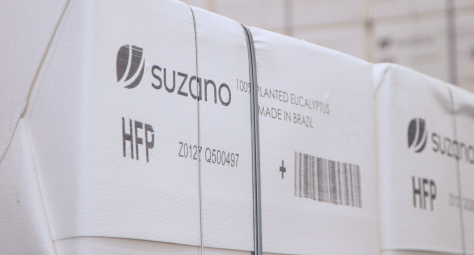sobre o que você deseja falar?


perguntas, sugestões ou problemas técnicos envolvendo a plataforma

informações sobre a empresa


A major and growing global concern is the rising deforestation rates in Brazil. Several initiatives have already been implemented to help prevent and reduce deforestation, including monitoring systems and deforestation alerts for each Brazilian biome. In this sense, and considering this to be a basic premise for any initiative in the face of biodiversity loss, Suzano is committed to a policy of zero deforestation and the adoption of best forest stewardship practices, establishing its plantations exclusively in areas previously anthropized by other uses, as well as improving the environmental quality of areas earmarked for conservation. All Suzano products are made from eucalyptus trees specifically planted and harvested for this purpose.
Thus, for Suzano, zero deforestation means no planting or acquisition of eucalyptus planted in areas previously occupied by native vegetation and have been deforested, legally or illegally, as established in its Wood Supply Policy. In other words, the company does not clear natural areas such as forests, savannahs, and native grasslands to plant eucalyptus. Furthermore, Suzano follows Brazilian legislation, forestry certifications, and international commitments to zero deforestation, and is audited annually to guarantee high standards of sustainability governance.
To ensure compliance with its commitments, the company applies the Due Diligence System (SDD) to 100% of the wood supplied to its factories. This assessment aims to ensure compliance with the principles of its policies, such as the commitment to zero deforestation; compliance with international regulations, including the EU Deforestation Regulation (EUDR); compliance with the FSC® and PEFC Forest Management and Controlled Wood standards (FSC-STD-40-005); the National Risk Assessment for Brazil (FSC-NRA-BR V1-0); and PEFC ST 2002:2020.
The main phases of this process are:
After the legal and environmental validations, the forest area is registered in a system called Zenith, which covers own and third-party wood and includes relevant information such as geolocation of plantation and conservation areas, name of the rural property, region, and state. This registration stage is part of Suzano's traceability program which is committed to ensuring that 100% of the products delivered to customers can be traced back to the origin of the wood. In other words, the program monitors the wood during planting, management, harvesting and transport to the mill, where the information is recorded in a system that allows it to be connected to the production of the batch of pulp and other products, such as paper and tissue.
Aiming to make its activities transparent to its stakeholders, Suzano has FSC® and PEFC Forest Stewardship certifications for its forestry units and FSC® and PEFC Chain of Custody certifications for its industrial units, distributors, and traders. All traceability controls are assessed during internal audits and by external audits, which are conducted by the independent third-party certification body.
To ensure that deforestation is not present in its value chain and to fulfill its Commitment to Zero Deforestation, Suzano has been publishing the Zero Deforestation Annual Report (2020, 2021, 2022, and 2023), since 2020, based on a systemic analysis of public data on deforestation in Brazil, cross-referencing it with its operating base.
This analysis covers all the regions where the company operates in the national territory to assess deforested areas, and includes the following stages:
Verifying the process results obtained are audited by an independent third party to ensure that the entire process adopted is credible, technically accurate, and impartial in its analysis and reporting.
Suzano actively participates in initiatives to protect natural areas, in partnerships with NGOs, local governments, and research institutes, which combat deforestation, promote ecological restoration, and create conditions to boost sustainable development.
Note:
Find out more by accessing the indicators “Total number and percentage of suppliers that have undergone environmental and social assessment”, “Percentage of products with traceable origin of raw materials” and “Commitments and partnerships”.
For a better understanding of this indicator, here are some important concepts: